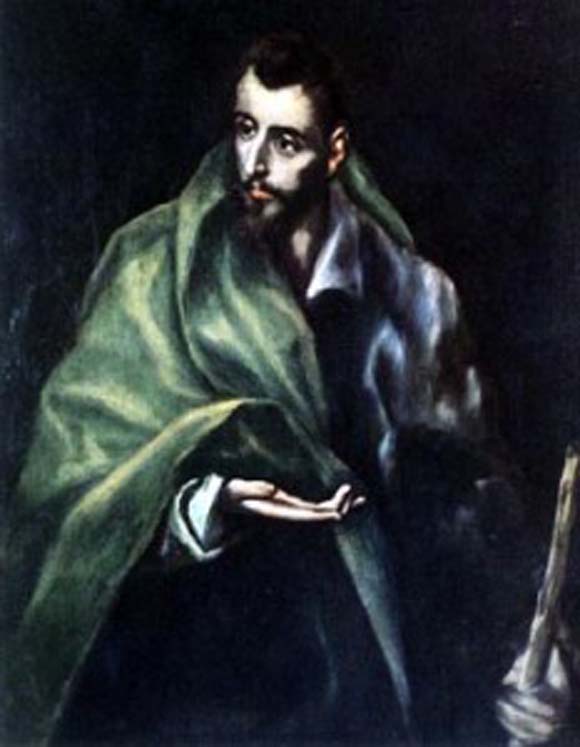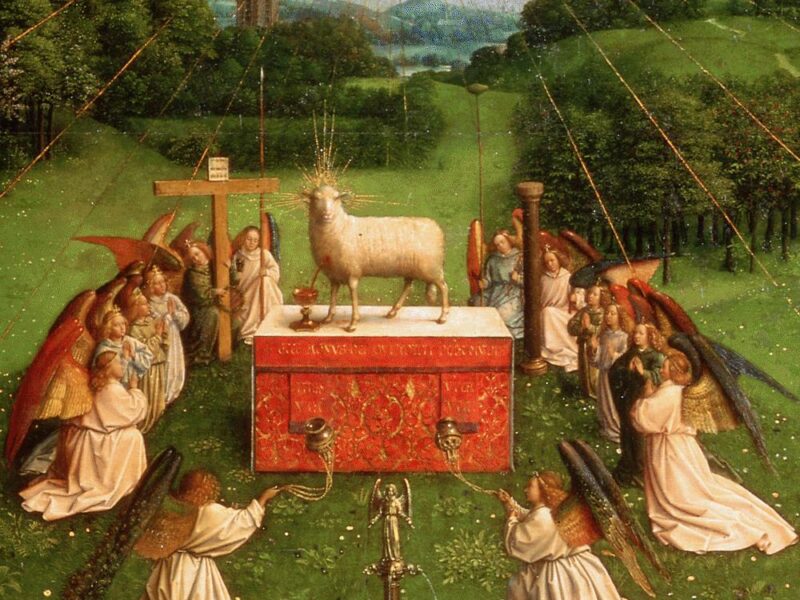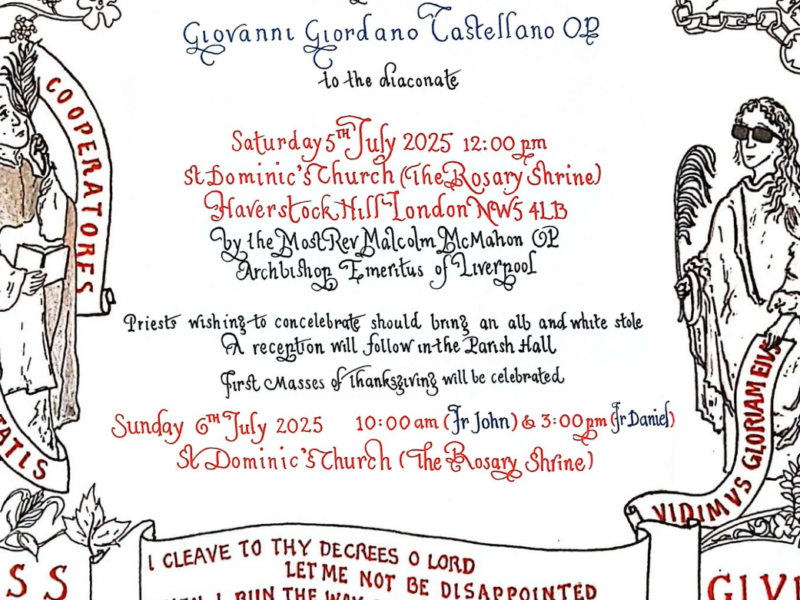
July 25 – Saint James
 Readings: 2 Corinthians 4:7-15; Psalm 125; Matthew 20:20-28
Readings: 2 Corinthians 4:7-15; Psalm 125; Matthew 20:20-28
The Gospel lists of the twelve disciples appointed by Jesus to be his companions mention two who share the name James: James, the son of Zebedee and James, the son of Alphaeus (Mark 3:17-18; Matthew 10:2-3). To distinguish the two, the first James, whose feast we celebrate on the 25th July, has commonly been styled “James, the Greater” while tradition has designated the second “James, the Lesser”. These titles perhaps refer to the different degrees of attention each of these disciples receives in the New Testament accounts of Jesus´ministry.
James the Greater and his brother, the disciple John, received from Jesus the nickname Boanerges, or “Sons of Thunder”. Several incidents in the Gospels point, in fact, to their fiery, impetuous temperaments. For example, when some Samaritans refuse to receive Jesus into their village James and John ask that they might be allowed to call down fire from heaven to consume the Samaritans (Luke 9:54). Together with Peter, James and his brother John form part of a privileged group within the circle of the Twelve permitted to witness important moments in the life of Jesus. The three disiciples are present at the miracle of the raising of Jairus´daughter (Mark 5:37; Luke 8:51), at the Transfiguration of Jesus (Matthew 17:1; Mark 9:1; Luke 9:28) and during Jesus´agony in the garden of Gethsemene (Matthew 26:37; Mark 14:33). They are thus witnesses both to the divine splendour and glory of Jesus and to his suffering and humiliation as the moment of his Crucifixion draws ever closer. It is within the context of these events that James and the other disciples had to learn what kind of Messiah Jesus was to be. In particular, they had to adapt their triumphalist understanding of Jesus seen, for example, in the request of James and John to sit in glory, one on the right and one on the left of Jesus, in his kingdom (Mark 10:37), learning instead that Christian discipleship involves drinking the same cup that Jesus was to drink, that is to say, sharing in his suffering and in his Cross. It is precisly this cup that James was later called to share. We read in the Acts of the Apostles that several years after the death and resurrection of Jesus, perhaps in AD 44, James suffered martyrdom at the hands of King Herod Agrippa, grandson of Herod the Great (Acts 12:1-2).
Various traditions exist claiming that Saint James preached Christianity in Spain and that his body was later translated to Compostela, in the north-western corner of the Iberian Peninsula. During the Middle Ages Compostela became one of the most frequented pilgrimage sites and even today it continues to be the destination for many pilgrims. Pope Benedict XVI has pointed to three important features in the life of James the Greater that continue to provide an example for Christians today: “promptness in accepting the Lord´s call even when he asks us to leave the “boat” of our human securities, enthusiasm in following him on the paths that he indicates to us over and above any deceptive presumption of our own, readiness to witness to him with courage, if necessary to the point of making the supreme sacrifice of life”.


